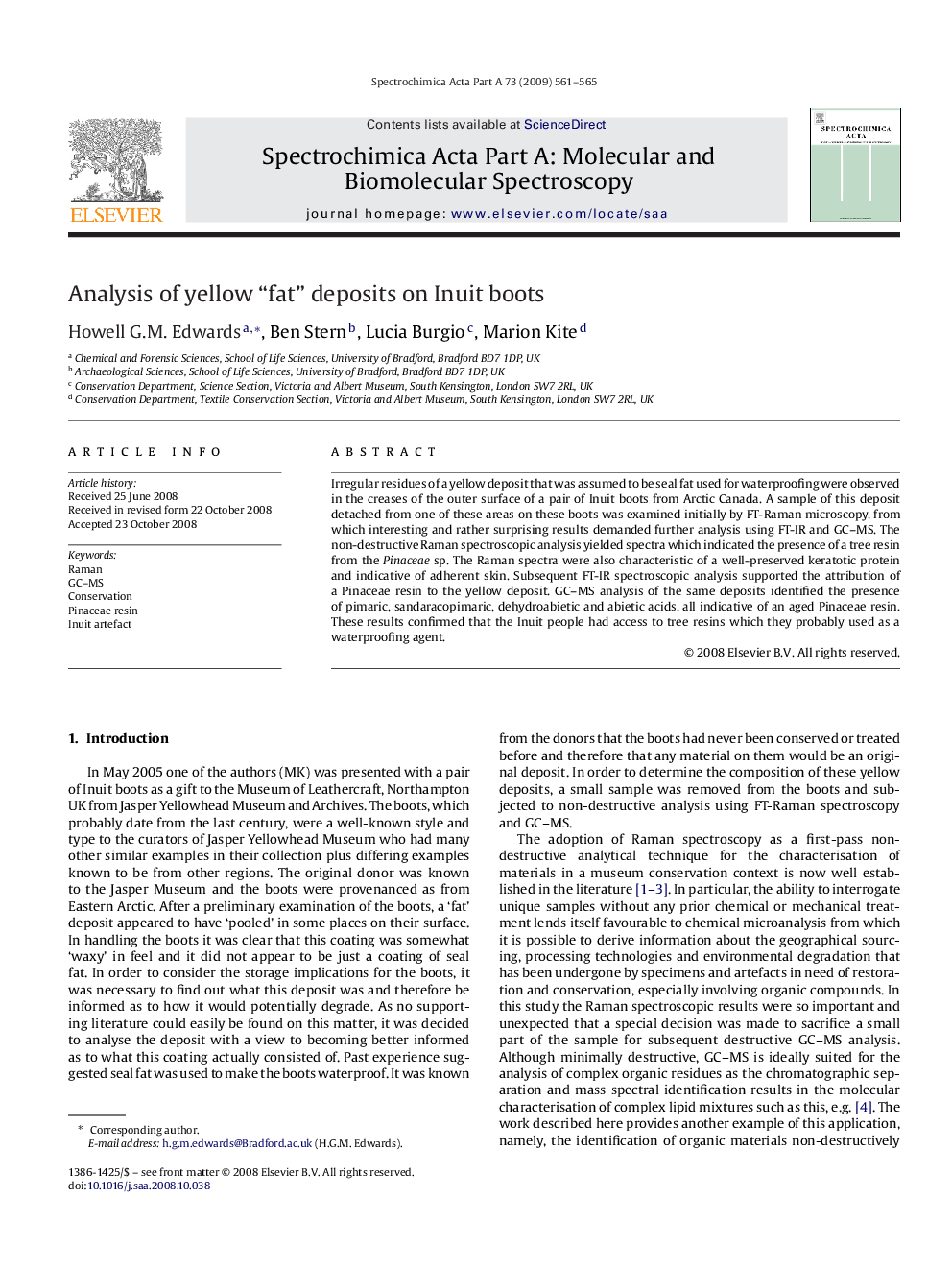| Article ID | Journal | Published Year | Pages | File Type |
|---|---|---|---|---|
| 1233365 | Spectrochimica Acta Part A: Molecular and Biomolecular Spectroscopy | 2009 | 5 Pages |
Abstract
Irregular residues of a yellow deposit that was assumed to be seal fat used for waterproofing were observed in the creases of the outer surface of a pair of Inuit boots from Arctic Canada. A sample of this deposit detached from one of these areas on these boots was examined initially by FT-Raman microscopy, from which interesting and rather surprising results demanded further analysis using FT-IR and GC-MS. The non-destructive Raman spectroscopic analysis yielded spectra which indicated the presence of a tree resin from the Pinaceae sp. The Raman spectra were also characteristic of a well-preserved keratotic protein and indicative of adherent skin. Subsequent FT-IR spectroscopic analysis supported the attribution of a Pinaceae resin to the yellow deposit. GC-MS analysis of the same deposits identified the presence of pimaric, sandaracopimaric, dehydroabietic and abietic acids, all indicative of an aged Pinaceae resin. These results confirmed that the Inuit people had access to tree resins which they probably used as a waterproofing agent.
Keywords
Related Topics
Physical Sciences and Engineering
Chemistry
Analytical Chemistry
Authors
Howell G.M. Edwards, Ben Stern, Lucia Burgio, Marion Kite,
